The Energy Information Administration reported that January crude oil production averaged 11.871 million barrels per day (mmbd), down 90,000 b/d from December. Despite the drop in January, crude production still rose by a spectacular 1.407 mmbd from June through January, a period when capacity takeaway constraints had been expected to slow down the growth in Texas.
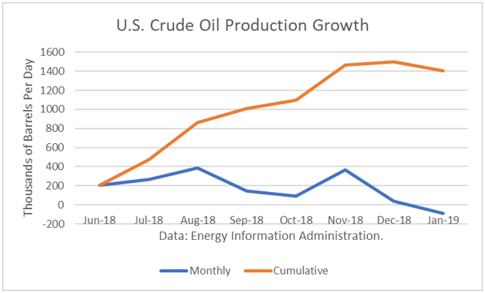
The year-over-year gains have been especially impressive with the January figure being 1.876 mmbd. And this number only includes crude oil. Other supplies (liquids) that are part of the petroleum supply add to that. For January, that additional gain is about 6,950 b/d.
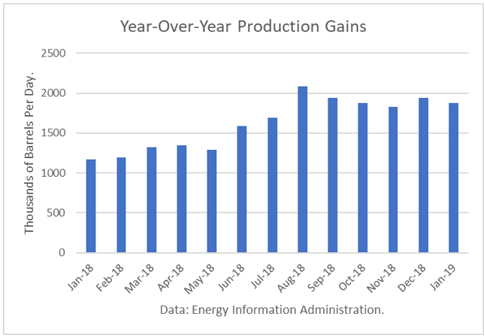
The drop in December was largely due to a 64,000 b/d decrease Texas. In addition, Colorado’s production decline by 13,000 b/d.
The EIA-914 Petroleum Supply Monthly (PSM) figure was 3,000 b/d lower than the weekly data reported by EIA in the Weekly Petroleum Supply Report (WPSR), averaged over the month, of 11.874 mmbd.
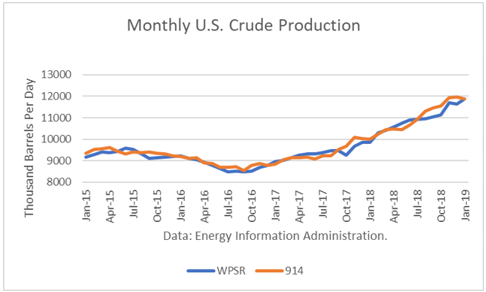
The January figure was 160,000 b/d lower than the 12.020 mmbd estimate for that month in the February Short-Term Outlook. That implies no need for another upward “rebenchmarking” to EIA’s model in future production levels at this time.
The EIA is projecting that 2019 production will average 12.410 mmbd. As shown below, the growth rate is very slow through 2019.
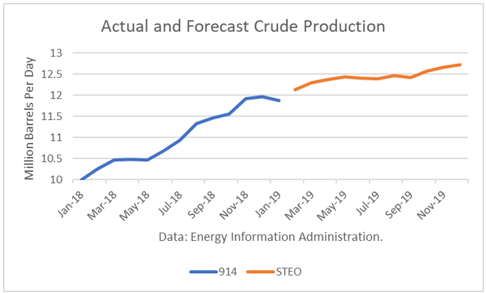
According to another report, the Permian Basin is expected to add as much as 2.0 mmbd in 2019 as three new pipelines come online. And in 2020, more new pipelines are expected.
Conclusions
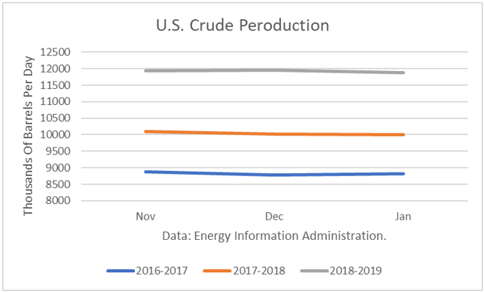
The recent lull in crude production mirrors similar lulls in the past two years during these months. It presents no new case for why 2019 production should not rise strongly.
Check back to see my next post!
Best,
Robert Boslego
INO.com Contributor - Energies
Disclosure: This contributor does not own any stocks mentioned in this article. This article is the opinion of the contributor themselves. The above is a matter of opinion provided for general information purposes only and is not intended as investment advice. This contributor is not receiving compensation (other than from INO.com) for their opinion.

Robert - The recent lull is simple math - a function of a falling rig count and completion rate. Based on the current rig count/completion rate, we will not see production growth in 2019 anywhere near that in 2018. Production growth in 2020 will be even more restrained. If your point is there is going to be a glut of US crude, it's not going to happen without an even more bullish run in crude prices and drilling and completing many more wells than we are currently.